
Journal of Siberian Federal University-Chemistry
Scope & Guideline
Fostering Collaboration in Chemical Research and Innovation.
Introduction
Aims and Scopes
- Material Science and Engineering:
The journal features research on the synthesis and characterization of novel materials, including polymers, ceramics, and composites, with applications in various industries. - Catalytic Processes and Reaction Engineering:
A significant portion of the journal's content is dedicated to studies on catalytic processes, optimization of reaction conditions, and the development of new catalysts for chemical reactions. - Environmental Chemistry and Green Chemistry:
Research addressing environmental concerns, including waste management, pollution remediation, and the development of sustainable chemical processes, is a core focus area. - Analytical Chemistry and Characterization Techniques:
The journal publishes studies that advance analytical techniques for chemical analysis, including spectroscopic methods, chromatography, and electrochemical analysis. - Biochemistry and Biomaterials:
The integration of chemistry with biological systems is represented, highlighting research on biomaterials, drug delivery systems, and the synthesis of biologically active compounds.
Trending and Emerging
- Sustainable and Green Chemistry Practices:
There is a marked increase in publications focusing on environmentally friendly methodologies, including the use of renewable resources and reduction of hazardous substances in chemical processes. - Nanotechnology and Nanomaterials:
Research on nanomaterials, including their synthesis, characterization, and applications in various fields such as medicine and environmental science, is rapidly gaining traction. - Electrochemical Methods and Energy Storage:
Emerging themes include studies on electrochemical processes, particularly in energy storage systems like batteries and supercapacitors, reflecting a growing interest in sustainable energy solutions. - Biomaterials and Biocompatible Polymers:
The journal is increasingly featuring research on biomaterials that interact with biological systems, focusing on drug delivery, tissue engineering, and biocompatibility. - Advanced Characterization Techniques:
There is a rising trend in the use of sophisticated analytical techniques, such as high-resolution spectroscopy and advanced microscopy, to characterize materials and understand their properties better.
Declining or Waning
- Traditional Inorganic Chemistry Studies:
Research focusing solely on classical inorganic chemistry, without application to materials science or catalysis, appears to be waning as interdisciplinary approaches gain prominence. - Basic Organic Synthesis:
While organic synthesis remains important, the trend shows a decline in publications centered on basic methodologies without links to practical applications or advanced materials. - Studies on Conventional Solvents in Chemical Processes:
Investigations utilizing traditional solvents without consideration for green chemistry principles have decreased, indicating a shift towards more sustainable practices.
Similar Journals

ORGANIC & BIOMOLECULAR CHEMISTRY
Exploring innovative pathways in chemistry research.ORGANIC & BIOMOLECULAR CHEMISTRY is a prestigious academic journal published by the Royal Society of Chemistry, dedicated to advancing the fields of organic and biomolecular chemistry. With its ISSN of 1477-0520 and E-ISSN of 1477-0539, this journal plays a pivotal role in disseminating high-quality research and contributing to the scientific community, particularly in biochemistry, organic chemistry, and physical and theoretical chemistry. Currently ranked in the third quartile for Biochemistry and the second quartile for Organic Chemistry and Physical and Theoretical Chemistry, it caters to a diverse audience of researchers, professionals, and students who seek insightful studies and reviews. With a publication history spanning since 2003 and ongoing till 2024, the journal fosters open access to its articles, encouraging the free exchange of knowledge. Situated in the vibrant academic environment of Cambridge, UK, ORGANIC & BIOMOLECULAR CHEMISTRY serves as a vital resource for innovative research at the intersection of chemical sciences.
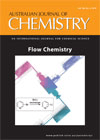
AUSTRALIAN JOURNAL OF CHEMISTRY
Pioneering discoveries in diverse chemical disciplines.The Australian Journal of Chemistry, with an ISSN of 0004-9425 and an E-ISSN of 1445-0038, is a distinguished publication from CSIRO PUBLISHING, dedicated to advancing the field of chemistry since its inception in 1948. Based in Australia, this journal serves as a platform for original research articles, reviews, and innovative studies that encompass a wide spectrum of chemical disciplines, aiming to foster communication and collaboration among researchers globally. Despite its Q3 ranking in the Chemistry (Miscellaneous) category and standing at rank #236 in Scopus’ general chemistry classification, it remains an essential resource for professionals and students seeking to stay informed about emerging trends and discoveries in chemistry. The journal does not offer open access, emphasizing the premium quality of peer-reviewed content that adheres to rigorous academic standards. By bridging theory and practice, the Australian Journal of Chemistry continues to play a crucial role in shaping the future of chemical sciences.

Reactions is a dynamic open-access journal published by MDPI, dedicated to the advancement of research in the fields of Chemical Engineering and Chemistry. Launched in 2020, the journal aims to provide a platform for scientists and researchers to share their findings and innovations, facilitating the synthesis and dissemination of knowledge within the global academic community. With an impact factor that reflects its growing influence, Reactions ranks 47th in the Chemical Engineering category and 72nd in Chemistry on Scopus, placing it within the vibrant landscape of contemporary chemical research. Housed in the picturesque city of Basel, Switzerland, the journal is committed to open access, ensuring that its high-quality content is readily available to all. This commitment not only enhances visibility but also fosters collaboration among researchers, professionals, and students striving to push the boundaries of chemical sciences. As we look towards 2024 and beyond, Reactions continues to encourage submissions that explore groundbreaking methodologies, innovative applications, and transformative theoretical frameworks in chemistry and chemical engineering.
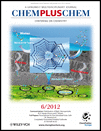
ChemPlusChem
Fostering Scientific Dialogue for a Brighter Chemical FutureChemPlusChem is a premier journal published by WILEY-V C H VERLAG GMBH, dedicated to the vibrant field of chemistry. With an ISSN of 2192-6506 and an impressive Q1 ranking in Scopus's 2023 category for miscellaneous chemistry, this journal serves as a significant platform for the dissemination of high-quality research and innovative findings. Since its inception in 2012, ChemPlusChem has fostered interdisciplinary collaborations, encapsulating a wide array of topics within chemistry that facilitate scientific advancement and education. The journal features a robust open access system, enabling extensive visibility for authors while providing easy-to-access resources for researchers, professionals, and students globally. Located in Weinheim, Germany, ChemPlusChem reflects international standards and ambitions, striving to enrich the global scientific community through rigorous research and engaging scientific discourse.
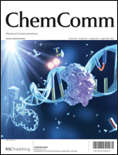
CHEMICAL COMMUNICATIONS
Showcasing the pulse of modern chemical research.Chemical Communications, published by the esteemed Royal Society of Chemistry, is a prominent journal within the field of chemical science, focusing on the dissemination of cutting-edge research in a variety of sub-disciplines including catalysis, materials chemistry, and electronic materials. Operating without an open access model, this journal provides critical insights from contributors around the globe, enhancing our understanding of complex chemical interactions and innovative applications. Ranked in the top quartile for several categories such as Ceramics and Composites, and Metals and Alloys, Chemical Communications boasts impressive Scopus rankings, securing strong positions across multiple fields and showcasing its influence within the scientific community. The journal is committed to advancing knowledge and fostering collaboration among researchers, professionals, and students, making it an invaluable resource for those looking to stay abreast of the latest advancements in chemistry and materials science. With a publication history dating back to 1965 and continuing into 2024, its rich archive serves as a vital repository of chemical research and development.
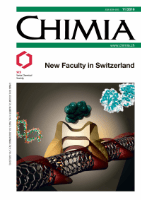
CHIMIA
Exploring the Intersection of Chemistry and Medicine.CHIMIA, published by the esteemed Swiss Chemical Society, is a premier journal that has been contributing to the fields of chemistry and medicine since its inception in 1947. With an ISSN of 0009-4293 and a commitment to advancing scientific knowledge, CHIMIA transitioned to Open Access in 2020, enhancing the accessibility of its high-quality research articles. Situated in Switzerland, the journal embraces a diverse scope, bridging various disciplines within the realms of chemistry and its intersection with medicine. As of 2023, it holds a respectable Q3 ranking in both Chemistry (miscellaneous) and Medicine (miscellaneous), reflecting its growing impact within the scientific community. Researchers, professionals, and students alike will find CHIMIA an invaluable resource as it publishes insightful findings, reviews, and discussions that stimulate innovation and dialogue in these dynamic fields.

RUSSIAN CHEMICAL BULLETIN
Your Gateway to Innovative Chemical Research.RUSSIAN CHEMICAL BULLETIN, published by SPRINGER, serves as a pivotal resource in the field of general chemistry, covering a wide array of topics that impact both theoretical and applied chemistry. With an ISSN of 1066-5285 and a presence since 1993, this journal provides a platform for disseminating significant research findings, practical applications, and novel methodologies within the broader chemistry community. While it currently holds a Q3 ranking in the Chemistry (miscellaneous) category and occupies the 230th position out of 408 in the Scopus rankings, its reputation continues to grow, fostering collaboration and innovation among researchers and professionals alike. Although the journal does not offer an open-access model, it is committed to making findings accessible within the academic community, ensuring that valuable insights can inform future research. With an anticipated convergence of studies extending to 2024, the RUSSIAN CHEMICAL BULLETIN remains an essential reference for those dedicated to advancing chemical science.

RUSSIAN JOURNAL OF APPLIED CHEMISTRY
Transforming Ideas into Innovative Solutions in ChemistryRUSSIAN JOURNAL OF APPLIED CHEMISTRY, published by PLEIADES PUBLISHING INC, serves as a pivotal platform for advancing knowledge in the fields of chemical engineering and general chemistry. With an ISSN of 1070-4272 and an E-ISSN of 1608-3296, this journal has been in continuous publication since 1995 and is set to continue until 2024. Although it operates without an open access model, researchers can access a wealth of innovative research findings, critical reviews, and insightful discussions that reflect the current trends and challenges in applied chemistry. Its rankings place it in Q3 quartiles for both Chemical Engineering and Chemistry as of 2023, indicating its emerging influence within these disciplines. The Scopus rankings further highlight its relevance, positioning it in the lower percentiles, suggesting a fertile ground for researchers aiming to elevate the field. Engaging with this journal can enrich academic and professional understanding, making it an essential resource for anyone dedicated to furthering their expertise in applied chemistry.

SynOpen
Bridging Biomaterials and Organic ChemistrySynOpen is an esteemed open-access journal published by GEORG THIEME VERLAG KG, based in Germany, dedicated to advancing the fields of Biomaterials, Catalysis, Materials Science, and Organic Chemistry. Since its inception in 2017, the journal has established itself as a vital platform for researchers wishing to disseminate their findings in a rapidly evolving scientific landscape, earning a commendable Q2 ranking in Materials Science (miscellaneous) and Q3 in other key categories for 2023. With an increasing impact on its disciplines, SynOpen aims to foster interdisciplinary collaboration and innovation by providing unrestricted access to high-quality research, thus promoting a broader reach and visibility for authors. Scholars, professionals, and students alike can benefit from the comprehensive range of topics covered, as the journal's commitment to presenting cutting-edge studies and methodologies positions it as a crucial resource for contemporary scientific inquiry.
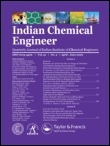
Indian Chemical Engineer
Innovating the Future of Chemical Engineering.Indian Chemical Engineer, published by Taylor & Francis Ltd, stands as a reputable journal in the field of chemical engineering, encompassing a wide range of topics pertinent to both academia and industry. With an ISSN of 0019-4506 and an E-ISSN of 0975-007X, this journal has been a key resource for researchers and professionals since its inception in 1992, undergoing a significant evolution from 2009 to 2024. Currently ranked in the Q3 category of chemical engineering (miscellaneous) in 2023, it reflects a dedicated commitment to disseminating innovative research and insights within the discipline. The journal is indexed in Scopus, achieving a rank of 148 out of 273, which denotes its growing influence in the field with a 45th percentile placement. Although currently not an open-access publication, it offers valuable content that contributes extensively to the advancement of chemical engineering research and education. Researchers, professionals, and students alike are encouraged to engage with this publication to stay at the forefront of industry advancements and academic discussions.